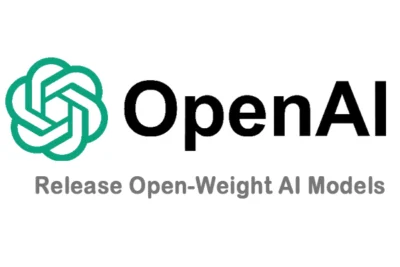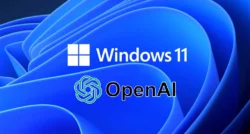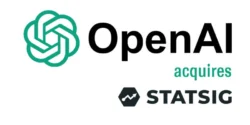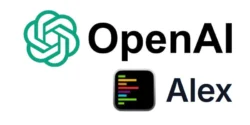
San Francisco, CA - Aug 05, 2025 (UTC) - OpenAI, the pioneering artificial intelligence organization, has announced the release of two groundbreaking open-weight language models, gpt-oss-120b and gpt-oss-20b, marking its first open-weight release since GPT-2 in 2019.
This strategic move aims to democratize AI access, responding to growing competition from rivals like DeepSeek and Meta, and aligning with OpenAI’s mission to make advanced AI widely available.
A New Era of Open-Weight AI
The newly released models, available for free on platforms like Hugging Face and GitHub under the permissive Apache 2.0 license, are designed to empower developers, researchers, and organizations worldwide. Unlike fully open-source models, open-weight models share their trained parameters, allowing users to run and fine-tune them on local hardware without needing access to the original training data or proprietary code. This approach strikes a balance between transparency and control, enabling customization for diverse applications while maintaining safety and security.
- gpt-oss-120b: A high-capacity model optimized for data centers or high-end desktops, capable of running on a single Nvidia 80GB GPU. It matches OpenAI’s o4-mini on core benchmarks and excels in specialized domains like competitive math and health-related queries.
- gpt-oss-20b: A compact model designed for consumer devices with as little as 16GB of memory, making it ideal for personal assistants, local file searches, and lightweight applications.
Both models feature advanced reasoning capabilities, incorporating chain-of-thought processing, tool use (such as web search and Python code execution), and a 128K context window for handling extensive documents and conversations. These capabilities make them suitable for tasks ranging from coding and scientific analysis to agentic workflows and enterprise solutions.
Strategic Shift Amid Competitive Pressure
OpenAI’s release comes in response to the rapid rise of open-weight models from competitors like DeepSeek, whose R1 model gained attention for its performance and cost efficiency, and Meta’s Llama series, which has surpassed 1 billion downloads. CEO Sam Altman acknowledged earlier this year that OpenAI had been “on the wrong side of history” regarding open model strategies, prompting this shift to engage more directly with the open-source community.
“We’re excited to make these models available to the world, putting AI into the hands of as many people as possible,” Altman said in a statement. “This release is about fostering innovation, supporting developers, and ensuring AI benefits humanity broadly.”
The models are integrated into OpenAI’s broader initiatives, including the OpenAI for Countries program, which supports governments in building AI infrastructure, and partnerships with nonprofits to scale impact in resource-constrained sectors. By offering models that can run offline and behind firewalls, OpenAI addresses data residency and security concerns, particularly for governments and institutions handling sensitive information.
Safety and Collaboration at the Core
OpenAI emphasized robust safety measures, conducting extensive testing to mitigate risks of misuse. The models underwent rigorous evaluations, including tests of maliciously fine-tuned versions, and were found to fall below high-risk capability thresholds. External safety experts reviewed the training and testing processes, setting a new standard for open model safety.
To optimize performance across diverse hardware, OpenAI collaborated with industry leaders like Nvidia, AMD, Cerebras, and Groq. The models support efficient deployment with native MXFP4 quantization, ensuring compatibility with a wide range of chips and platforms, including Amazon Bedrock, Amazon SageMaker, and consumer programs like LM Studio and Ollama.
Community-Driven Development
The release follows months of engagement with the developer community, sparked by feedback sessions announced in April 2025. OpenAI hosted events in San Francisco, Europe, and Asia-Pacific to gather input, ensuring the models meet real-world needs. “We’ve built these models with the open-source community’s feedback to deliver meaningful advancements in reasoning and safety,” OpenAI stated on its blog.
Developers can now access the models to build applications ranging from AI agents to customized enterprise solutions. The Apache 2.0 license allows for commercial use, redistribution, and integration into other software, fostering innovation without restrictive barriers.
Looking Ahead
The release of gpt-oss-120b and gpt-oss-20b positions OpenAI as a key player in the open-weight AI ecosystem, challenging competitors while reinforcing U.S. leadership in AI innovation. As the AI landscape evolves, OpenAI’s move signals a commitment to balancing openness with responsibility, potentially reshaping how AI is developed and deployed globally.
For more details or to download the models, visit OpenAI’s official page or Hugging Face. Developers are encouraged to share feedback to guide future iterations, ensuring these models continue to evolve in line with community needs.





